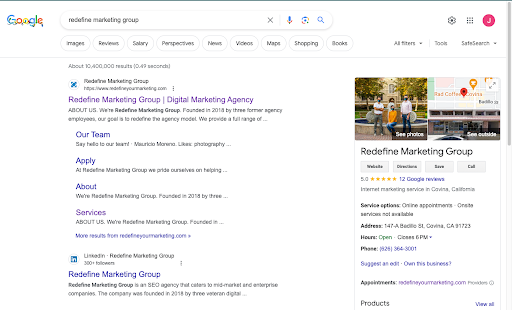A Search Engine Results Page (SERP) is the display of results returned by a search engine in response to a user’s query. This page is a main component of the online search experience, as it directly presents the information, websites, or services sought by users. SERPs are not exclusive to any single search engine and are a fundamental feature of platforms like Google, Yahoo, and Bing.
To understand the evolution of SERPs, it’s helpful to look back at the early stages of the internet. As the digital world grew, the need for effective information retrieval became more and more important. Initial SERPs were quite basic, offering just a list of links. However, as technology advanced, so did these result pages. Today, they are much more sophisticated, featuring not only links but also snippets, images, maps, and various other helpful elements, making the search experience much more comprehensive and user-friendly.
Organic Results: These are listings that have naturally ranked on the SERP based on the search engine’s algorithms. They are not paid for and are typically considered more credible by users.
Paid Results: Often appearing at the top of the SERP, these are advertisements where businesses pay to be featured. They are marked as ads and are part of Search Engine Marketing (SEM) strategies. They are often noted on Google as “Sponsored.”
Featured Snippets: These are special boxes that highlight a segment of information, often in a Q&A format, aiming to directly answer a user’s query.
Local Listings: For queries with local intent, search engines display relevant local businesses or locations.
Images and Videos: Depending on the query, search engines may include a section of relevant images or videos.

SERPs are integral to online marketing strategies. High visibility on a SERP, especially within the top organic results, is a primary goal of Search Engine Optimization (SEO). This visibility translates to more website traffic, increased brand awareness, and potential business growth. Marketers analyze SERP patterns and changes to adapt their SEO and content strategies effectively.
Today’s SERPs are more dynamic and user-focused, providing a blend of textual, visual, and interactive content. They often include:
- People Also Ask (PAA) Boxes: A section where related questions to the initial query are displayed.
- Rich Snippets: Enhanced results with additional information like ratings, images, or event dates.
- Knowledge Graphs and Panels: Boxes containing a summary of key information about a query topic, often seen for searches about public figures, places, or organizations.
- Voice Search Integration: With the rise of voice-activated assistants, SERPs are increasingly optimized for voice search queries.
The components of a Search Engine Results Page (SERP), like organic listings, paid ads, and interactive snippets, each serve a unique purpose in the way we find and use information online. As these elements have evolved, they reflect how our online habits and tech capabilities have changed, too.
For businesses, ranking in SERPs can really boost their digital marketing game. It’s all about standing out in a sea of online content and grabbing the attention of potential customers. And for online searches, knowing your way around these search pages can make a huge difference. It helps you tap into the wealth of information on the internet more effectively. As long as you’re asking the right questions, SERPs can help you answer almost anything.
Google my Bussiness –>
SEO –>


